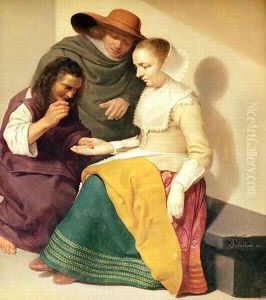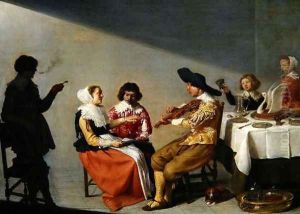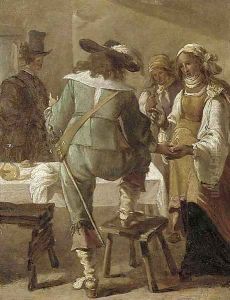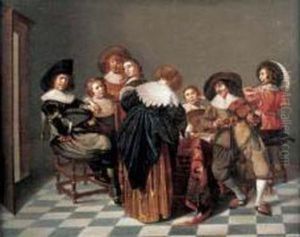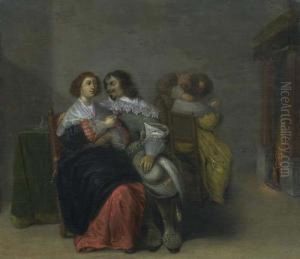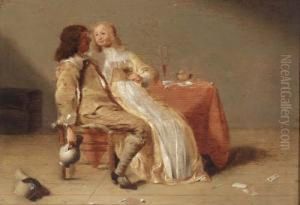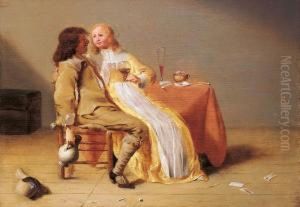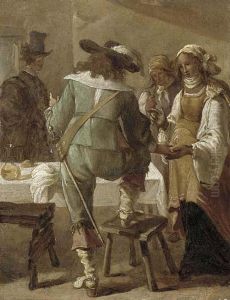Jacob van Velsen Paintings
Jacob van Velsen was a Dutch Golden Age painter, known for his small, finely detailed genre scenes and portraits, which often depicted merry companies and musicians. He was born in Utrecht in 1597, and not much is known about his early life or training. It is speculated that he may have been a student of the prominent Utrecht painter Abraham Bloemaert, who was known for his influence on many young artists in the region.
Van Velsen's work reflects the influence of the Caravaggisti, the followers of Caravaggio, who were known for their dramatic use of light and shadow. This is evident in the strong chiaroscuro and the realistic, emotional expressions found in his paintings. Despite these influences, van Velsen developed his own distinct style, characterized by a refined and elegant approach to genre scenes.
In 1621, Jacob van Velsen married and moved to Amsterdam, where he became a member of the painter's guild. His paintings became quite popular, and he was able to attract a clientele that appreciated his particular style. Throughout his career, he continued to paint scenes of daily life, often imbued with a sense of humor and a keen eye for detail.
Jacob van Velsen's paintings were not large in scale, but they were rich in detail and texture. He had a talent for depicting different materials such as silk, fur, and metal, which added a tactile quality to his work. His genre scenes often included figures engaged in everyday activities, and he had a particular skill in capturing the nuances of facial expressions and body language.
The exact date of van Velsen's death is not well documented, but it is generally accepted that he died in 1656. His works are held in various museums and collections around the world, and he is regarded as one of the notable genre painters of the Dutch Golden Age, although not as well-known as some of his contemporaries like Johannes Vermeer or Pieter de Hooch. Van Velsen's legacy lies in his ability to capture the spirit and atmosphere of his time, providing a window into the life and culture of 17th-century Netherlands.
